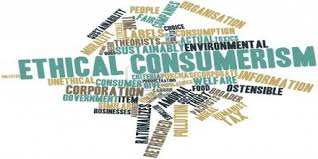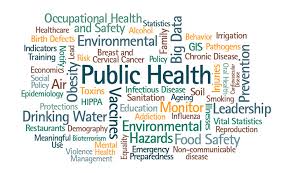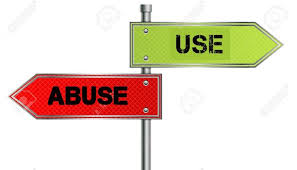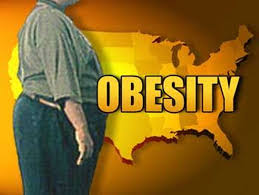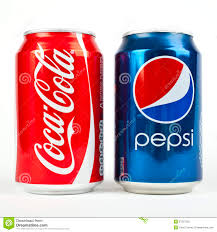
Employment, Contract, and Reward
Order Instructions:
2,500 word Written Report – 100 marks weighted to 70% of marks for the module
Your friend has accepted a new job and has the opportunity to choose between becoming an employee or an independent contractor. Advise your friend on how employee/contractor status is determined, the advantages and disadvantages of each status and the source of the terms contained within employment a contract.
70%
(ii) Marcia placed an advertisement in a shop window which read: ‘£50 Reward for the return of my black wallet which I lost yesterday, Sunday. Call 020 000 1111”.
Meanwhile, Frank found a wallet in the street and when he examined it, he saw an address inside which he understood to be that of the owner. He was busy for a couple of days so he waited until Tuesday morning before calling at the address with the wallet.
Marcia answered the door and was very pleased to see her wallet, complete with all of the contents. She thanked Frank and he went on to work.
That evening, on his way home, Frank saw Marcia’s advertisement in the shop window and he wondered if it was referring to the wallet he had returned. He called at Marcia’s house and she confirmed that the advertisement was hers. Frank asked for the reward and Marcia told him he was not entitled to it.
Frank is upset and puzzled and has asked you to explain why Marcia has refused to give him the reward.
30%
Parts and (ii) have different weighting therefore the word count for each part should reflect this. Approximately 1,750 words for part and 750 words for part (ii).
Please remember that you must provide properly referenced evidence for all of the claims/assertions you make.
SAMPLE ANSWER
Employment, Contract, and Reward
Part I
How Employment/ Contract Status is Determined
By definition, independent contractors are self-employed individuals and since these individuals are not considered employees, they are not covered by labor, employment, and related tax laws. As such, employers may be tempted to reclassify workers as independent contractors so that they can evade the payment of benefits and taxes alongside other liabilities (Cappelli & Keller, 2013). Whether or not an employee is covered by a certain tax, labor, or employment law hinges in relation to the definition of a worker. In many occasions, statuses often fail to provide a clear definition of the term employee. Therefore, there is no single standard, which can be employed in distinguishing between an independent contractor and employee. For instance, in UK, employers can determine the employment status of individuals by focusing the tax and employment laws. By focusing on the tax law, employers can manage to determine whether individuals are exempted from PAYE (Pay As You Earn) or not. On the other hand, employment law helps employers to determine whether their employees have employee’s rights or not (Bidwell & Briscoe, 2009). One can be considered an employee when he or she works under a contract of employment. An individual can be an employee under employment policy, but have a status that is different for purposes of tax. As such, employers need to work out the status of every worker in both tax law and employment law. All employees are considered workers, but an employee possesses additional employment responsibilities and rights, which are not applicable to workers who are regarded as employees.
In working out the employment status of an employee, several conditions are often taken into consideration. An individual is considered an employee when this person is needed to work regularly, unless he or she is on leave such as sick leave, holiday and maternity leave. A person is also considered an employee when he or she is needed to perform limited number of hours of which payments are made. Furthermore, an individual is taken as an employee when a supervisor or manager is accountable for his or her workload, dictating when a piece of task should be completed, and when this person cannot send a different person to perform his or her work (Cappelli & Keller, 2013). Any person is considered an employee when this individual is paid during holidays, when national insurance and tax is deducted from his or her wage; when he/she can join the pension scheme of his or her employer; when the employer’s grievance and disciplinary applies to him or her; when the person’s contract outlines redundancy procedures, when then this person’s employer provides tools, materials, and equipment needed for his or her work; when this person has a different job from that of his or her employer, when he/she works for his or her employer only; and when his/her stamen of conditions and terms of contract uses terms such as employee or employer. In case the employers are unable to determine the employment or contract status of an individual, the employer can use the ESI (Employment Status Indicator) to achieve this goal. On the contrary, this tool cannot be employed in determining the status of employment of some workers such as agency workers, company directors, individuals holding on office and persons offering services via intermediaries. The ESI tool operates by asking a series of questions concerning the working relationship between the engager and worker. Moreover, the presence of a contract that outlines the terms of the relationship between the worker and employer is significant in this process. Once the details needed by the tool have been provided, the ESI then displays worker’s employment status. The ESI tool can be relied on when the answers it has provided offer a clear reflection of the conditions and terms under which the worker being investigated provides his or her services (Cappelli & Keller, 2013). The outcomes of the tools can be relied on when the ESI has been completed by either an authorized representative or engager.
Advantages of Employment Status
As an employee, one can be entitles to several advantages. First, an employee is entitled to a steady or constant income. Employees are often paid fixed salaries, which helps in ensuring that they receive regular amount of income at the end of every month. Furthermore, this benefit is significant in ensuring that deductions are not made on the wages of employees even in situations where they may not attend work due to issues such as sicknesses or other commitments. As such, employees can be considered to enjoy the element of income security in that they are certain of the amount that they will receive at the end of the month based on the agreement they made with their employers (Bidwell & Briscoe, 2009). Moreover, employees are entitled to work within specified time frames. As such, any extra hour besides the normal working hours is considered overtime and the employer is often accountable to paying employees for such hours. The status of being employed also subjects the employees to benefits like health insurance among other insurance covers. As such, employees can obtain medical treatment in case of situations involving occupational injuries and other illnesses. Employees are also entitled to other benefits such as training, which can help in improving the worker’s levels of skills and knowledge in the field of practice.
Disadvantages of Employment Status
Despite having many advantages, employees the status of being employed has been noted to have many disadvantages. In relation to this, the incomes of employees are low despite being steady. Many workers are always not aware of the value of the input that they give to their employers. Moreover, while many workers lack the knowledge of the value of their inputs, they can also be fired at any moment. Thus, the status of being employed has no employment security. When employees are fired, their income often ceases to be steady for a prolonged period. Employees have also been noted to have limited levels of control over their work as they are often monitored by their employers who have total authority over them (Cappelli & Keller, 2013). Working as an employee means that workers do not own much of their time, which limits the personal activities in which individuals can be engaged. Moreover, being employed limits workers’ capabilities to decline performing tasks that are assigned to them despite these tasks being difficult or complex (Cappelli & Keller, 2013). Working with employers can also be stressful, especially in situations where tasks are needed to be performed urgently. Consequently, an employee may also experience problems working other employees who may prove stubborn. Lastly, the aspect of earning a fixed salary limits the amount of income that employees can earn at every payment period.
Advantages of Contract Status
Working as an independent contractor can subject an individual to several benefits. Independent contractors often know the value of their work and are at an advantage of charging substantial amounts for the services they are offering their clients. Moreover, the fact that these individuals have almost total control over the work enables them to perform these tasks in a relaxed environment (James & Harvey, 2003). Thus, independent contractors are not vulnerable to stress from other employees or employers as in the case of employees. Besides, independent contractors have the ability to decline performing task that they consider difficult or complex. Independent contractors have the ability to increase their level of income as the can look for jobs from many clients. Moreover, this benefit is enhanced by the fact that independent contractors have the knowledge of the quality of their input, which enables them to charge prices that are commensurate to the quality of service or tasks that they perform to their clients. Being that these individual are their own bosses, the level of job security that they enjoy is higher than that of employees. As such, they do not suffer from the fear of being sacked by employers as in the case of employees.
Disadvantages of Contract Status
Being an independent contractor can subject an individual to certain disadvantages. First, independent contractors are not entitled to steady incomes as there are seasons when they often experience shortage of clients. As such, these individuals are always forced to ensure that they generate more income during boom seasons to that they can compensate for leans seasons. Therefore, the level of income security that these individuals enjoy is lower than that enjoyed by employees. In addition, independent contractors are not entitled to benefits such as health insurances and other insurance covers (James & Harvey, 2003). As such, these individuals cannot obtain financial aid from their clients in cases involving illnesses or occupational accidents. As a result, they may be forced to cover for expenses arising from such events. Furthermore, independent contractors cannot benefit from incentives such as trainings that employers often offer to their employees. As such, independent contractors are always forced to cover for the costs of such incentives.
Source of Terms Contained within an Employment and Contract
Prior to entering into any contract, several statements are often made by one party with the aim of inducing or encouraging the other party or group to enter into a contract (Gunasekara, 2013). In relation to this, disputes may arise from such contracts concerning whether the statements made should be the term or part of the contract. Besides, these disputes may concern the statements that should be considered as mere pre-contract talk thereby excluding them from being the term or part of the contract. It is crucial to note that parties or groups that have entered into a contract are only bound the terms of the contract, and not by peripheral statements, which have been developed. In relation this, courts may be forced to focus on the proof of intention by either one or other groups that the statement should form part of the contract. For example, when the interval between the establishment of the statement and attainment of the ultimate contract and agreement is long, the statement can be considered as part of the contract. It is also significant to note that signing of an agreement qualifies that agreement to be the term of the contract. Furthermore, many employees are often issued with written statements that contain the key conditions and terms of the employment contracts. However, even independent contractors are often entitled to such documents (Gunasekara, 2013). Some of the information that should be provided in such documents are names of employee or contractor and employer or client, date of employment or contract, and continuous employment or contract started, working hours or duration of contract, and job location. As such, employees and independent contractors should be cautious prior to signing agreements or contracts with clients or employers or clients as breaching them may lead to adverse legal consequences.
Part II
Reward can be defined as a compensation or sum of money that is issued to a class of individuals or the general public for the performance of service that is considered special (Jansen & Zimmerman, 2011). In relation to this, the money that Marcia wants to give to anyone that finds her black wallets is considered a reward as it is a payment to a special service, which involves finding the lost wallet and taking it to Marcia. In many situations, police often offer rewards for information that can helps in arresting and convicting offenders. In legal terms, the individual promising a reward is offering himself or herself to enter into an agreement or contract with the individual who conducts the required action. As such, the legal principles of rewards are obtained from the contracts’ law. Taking this aspect into consideration, it can be argued that Marcia had offered herself into a contract with Frank.
A contract of reward is often created when an actual offer that is valid is made. In such a situation, the offer is considered a mere proposal or conditional promise by the individual issuing the reward (Jansen & Zimmerman, 2011). The person issuing the reward is referred to as the offerer in legal terms as in the case of Marcia. It is also vital to note that a consummated contract may be attained when the requested action has been conducted. Therefore, the case involved between Marcia and Frank is considered a contract as the required action, which involves finding the black wallet and taking it to Marcia, has been performed. The individual issuing the reward can do it on any condition that he or she wishes and the terms must be accomplished prior to the recovery of the reward. In relation to this, terms that Marcia stated were met by Frank as he found the lost black wallet and returned it to Marcia.
In legal terms, it is required the information provided must be timely and adequate for an individual to collect a reward from the offerer. In a situation in which the information was already known when it was provided by the informant, a reward cannot be given (Weber & Mayer, 2011). In relation to this, it can be argued that Frank presented the lost wallet when Marcia had already addressed the urgency that she needed from it. The advertisement made my Marcia indicated that she was to be contacted on Monday, while Frank contacted her on Tuesday. As such, it can be argued that Frank’s submission was untimely and inadequate. Moreover, in the legal terms it is required that the individual performing the required action be aware of the offer and purpose of performing such a service (Kraft, 2013). As such, any person that performs the required action without the knowledge of the offer or the purpose of his or her action is not entitled to the collection of the reward. In relation to this, Frank is not entitled to the collection of the reward, as he was unaware of the offer made by Marcia and purpose of his action. When Frank returned the lost wallet to Marcia, he did not ask for the compensation for his service as promised by Marcia. This action made Marcia realize that frank was unaware of the offer she had made. Moreover, Frank made his ignorance clear to Marcia when he returned to collect the reward after reading about the offer in the advertisement that had been posted by Marcia. As a result, Marcia acted in line with the law and declined to issue the promised offer to Frank. In this case, Marcia can be considered innocent.
The rule, which denies the person who lacks the knowledge of the offer or the purpose of his or her action from collecting rewards, is founded on the concept that in the absence of such knowledge the meeting of minds cannot exist (Goldenberg, 2014). Meeting of minds is significant in facilitating or advancing the realization of the terms provided by the contract. In relation to this, it can be argued that there was not meeting in minds between frank and Marcia as frank was unaware of the conditions provided by the contract prior to making his submission or presenting the lost wallet. Furthermore, it is vital to note that having the knowledge of the statutory remedy does not qualify the claimant to recovering a reward. Therefore, Frank could have managed to collect the rewards from Marcia in a situation in which he was aware of the offer and purpose of his action prior to delivering the wallet to Marcia.
References
Cappelli, P; Keller, R. (2013). Classifying Work in the New Economy. Academy of Management Review, 38(4), 575-596.
Cappelli, H; Keller, JR. (2013). A Study of the Extent and Potential Causes of Alternative Employment Arrangements. Industrial & Labor Relations Review, 66(4), 874-901.
Bidwell, J; Briscoe, F. (2009). Who Contracts? Determinants of the Decision to Work as an Independent Contractor among Information Technology Workers. Academy of Management Journal, 52(6), 1148-1168.
Goldenberg, P. (2014). Protecting the Reliance. Columbia Law Review, 114(4), 1033-181.
Gunasekara, C. (2011). Independent Contracting in Low Skilled, Low Paid Work in Australia. International Journal of Employment Studies, 19(1), 50-69.
James, Jr; Harvey S. (2003). Employment Contracts, US Common Law and the Theory of the Firm. International Journal of the Economics of Business, 10(1), 1-49.
Jansen, N; Zimmerman, R. (2011). Contract Formation and Mistake in European Contract Law: A Genetic Comparison of Transnational Model Rule. Oxford Journal of Legal Studies, 3194), 625-662.
Kraft, J. (2013). The Road To Fulfillment: The Importance of Trust in Contract Types. Journal of Organizational Culture, Communications & Conflict, 1792), 137-150.
Rosenberg, A. (2013). Contract’s Meaning and The Histories of Classical Contract Law. McGill Law Journal, 59(1), 165-207.
Weber, L; Mayer, J. (2011). Designing Effective Contracts: Exploring the Influence of Framing and Expectations. Academy of Management Reviews, 36(1), 53-75.
We can write this or a similar paper for you! Simply fill the order form!




